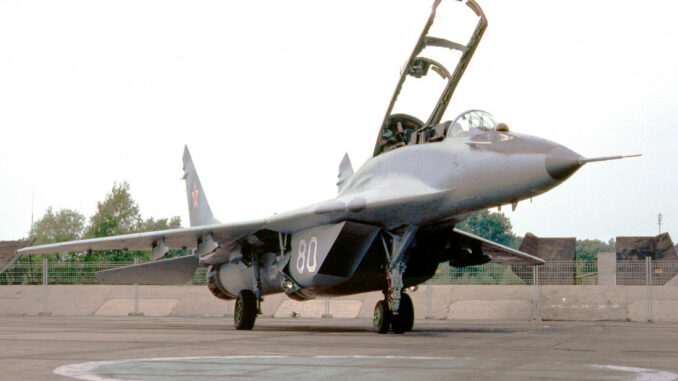
Discover the 16 best multi-role fighter jets in 2025: performance, capabilities, weapons, users, and detailed technical specifications.
A multirole fighter jet is a military aircraft capable of performing several types of missions from a single platform. Unlike specialized fighters, it can provide air superiority as well as ground attack, reconnaissance, electronic warfare, and interception. This versatility allows air forces to reduce the number of aircraft types in service, facilitating logistics, maintenance, and pilot training. Multirole aircraft are designed to adapt to a variety of operational environments, from conventional conflicts to asymmetric operations. They use integrated sensors, a variety of weapon systems and scalable software to optimize their effectiveness depending on the mission. In 2025, these aircraft will form the backbone of modern air forces, combining firepower, mobility, autonomy and interoperability.
F-35 Lightning II (United States)
The Lockheed Martin F-35 Lightning II is one of the few fully operational fifth-generation fighters. It comes in three variants: the conventional takeoff F-35A, the short takeoff and vertical landing F-35B, and the F-35C designed for aircraft carriers. With advanced stealth, sensor fusion, and an advanced data-sharing network, it offers unmatched situational awareness. Its AN/APG-81 AESA radar, DAS and EOTS infrared sensors enable air-to-air, air-to-ground, reconnaissance, and electronic warfare missions without changing aircraft. The F-35’s stealth, combined with its network architecture, optimizes joint and allied operations. It is already in service with more than 15 countries. It has a maximum speed of Mach 1.6 (1,930 km/h) and can carry up to 8,160 kg of weapons. It has been deployed in real combat by Israel and the United States. Despite its high cost (around $80 million per unit), it is one of the most modern and integrated aircraft in the world, suitable for high-intensity conflicts and asymmetric warfare.
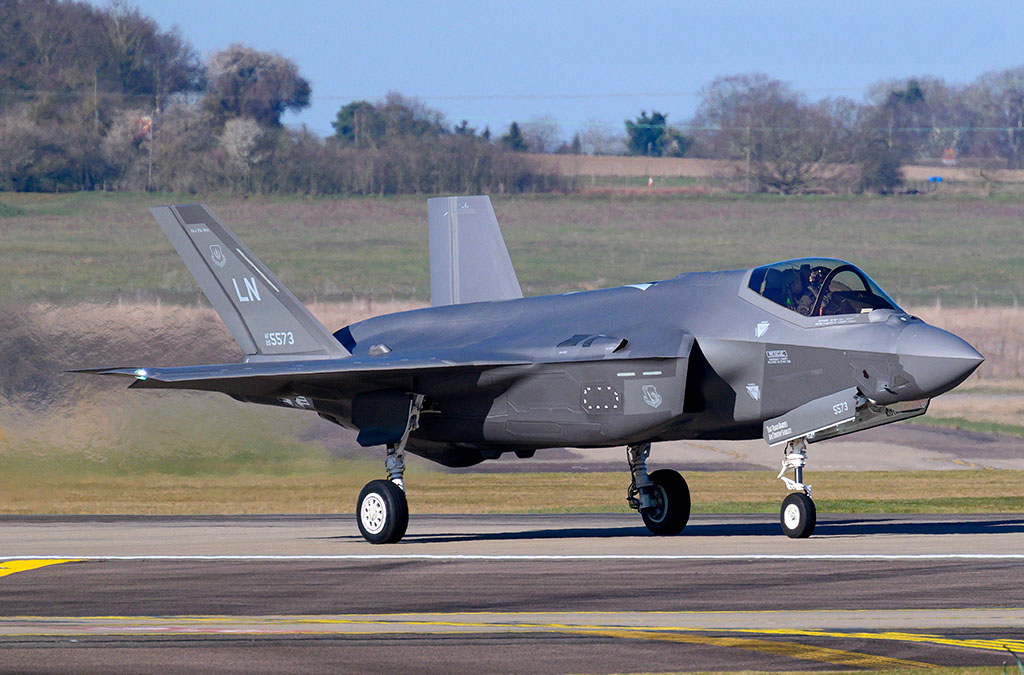
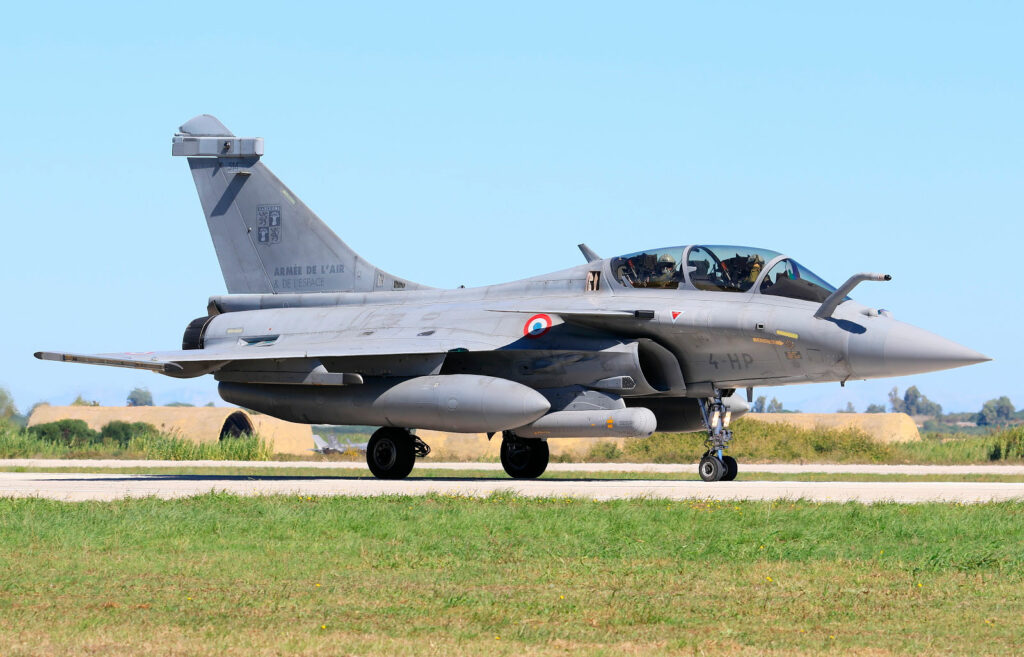
Dassault Rafale (France)
The Dassault Rafale is a so-called “multi-role” aircraft, capable of performing different missions in a single flight. Equipped with Snecma M88 engines, RBE2 AESA radar, and the SPECTRA electronic warfare system, it can adapt to multiple environments, from interception to nuclear deterrence. It can carry up to 9,500 kg of payload on 14 hardpoints, including MICA and Meteor air-to-air missiles, AASM guided bombs, SCALP missiles, and ASMP-A nuclear weapons. With a maximum speed of Mach 1.8 (2,200 km/h), it remains maneuverable while maintaining a considerable range (3,700 km with tanks). The Rafale has proven its effectiveness in operations in Libya, Mali, Iraq, and Syria. It is in service with the French military and has been exported to India, Qatar, Egypt, and the United Arab Emirates. Its versatility, robustness, and ability to be deployed from austere bases or aircraft carriers make it a credible strategic platform for the long term. The Rafale remains competitive on the global market, even against fifth-generation aircraft.
Eurofighter Typhoon (Europe)
The result of cooperation between the United Kingdom, Germany, Italy, and Spain, the Eurofighter Typhoon is a multi-role aircraft designed primarily for air superiority and later adapted for air-to-ground missions. It is equipped with two EJ200 turbojet engines, a CAPTOR-M (later CAPTOR-E AESA) radar, and can reach Mach 2 (approximately 2,400 km/h). Highly maneuverable thanks to its unstable design and digital flight controls, it excels in close combat and BVR (beyond visual range) combat, particularly thanks to the Meteor missile. Its payload capacity exceeds 7,000 kg. It can also carry out ground strikes with Paveway IV, Brimstone, or Storm Shadow bombs. Used in campaigns in Libya and Syria, it is constantly being modernized with upgrade packages (Tranche 3B, then “Phase 4 Enhancement”). Despite a unit cost of around $90 million, its modularity and continuous upgrading ensure its longevity. It is operated by several NATO armies, as well as by Saudi Arabia, Austria, Qatar and soon Indonesia.
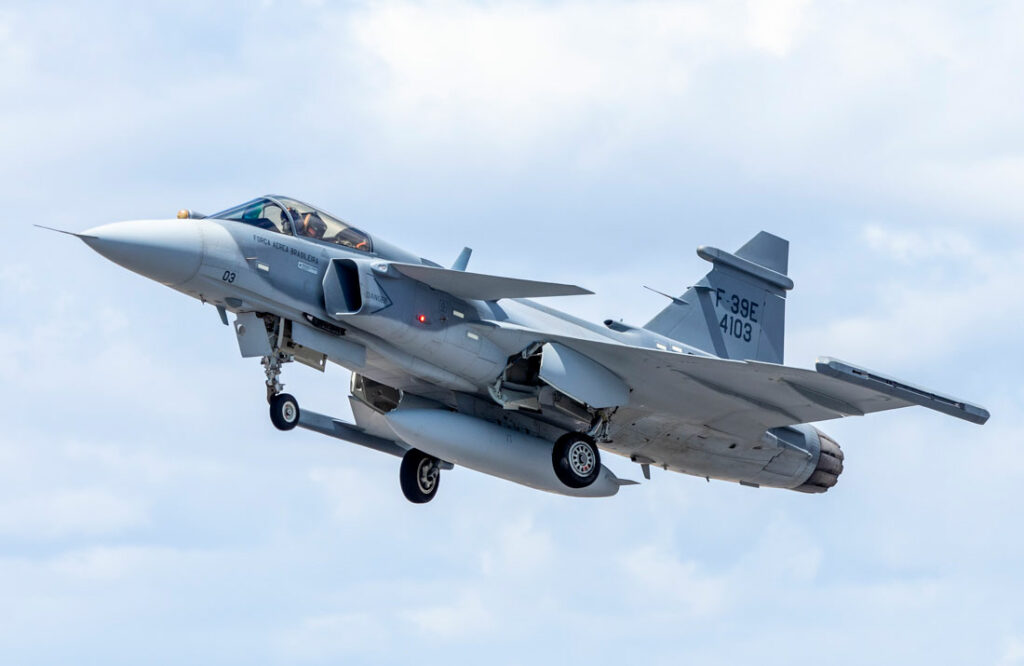
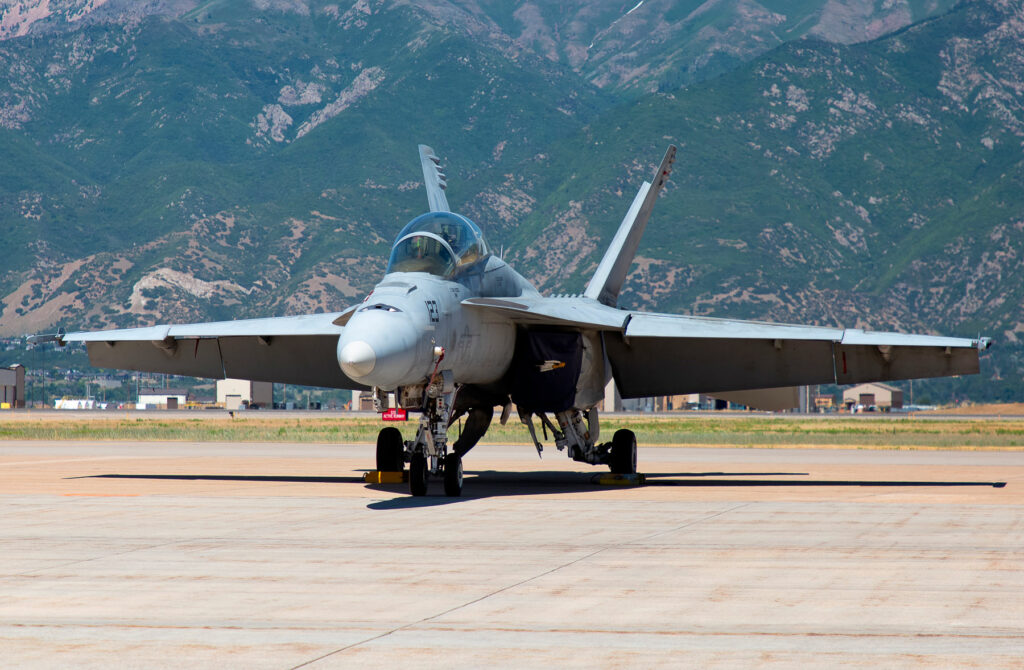
F/A-18E/F Super Hornet (United States)
Designed as an evolution of the original Hornet, the F/A-18E/F Super Hornet is a multi-role naval fighter for US Navy aircraft carriers. It has an enlarged airframe, greater fuel capacity, AN/APG-79 AESA radar and can carry a wide variety of weapons. It can reach Mach 1.8 (2,200 km/h) with a range of over 700 km in air-to-ground configuration. It is used for air superiority, precision strikes, naval bombardment and electronic warfare (in its EA-18G Growler variant). It has been deployed in conflicts in Iraq, Afghanistan and Syria. It is a reliable aircraft with a low accident rate and reasonable maintenance costs (around $24,000 per flight hour). Australia and Kuwait are also users. Its seamless integration on aircraft carriers, robustness, and ability to operate in harsh marine environments make it a key component of modern naval aviation forces.
Su-35S Flanker-E (Russia)
The Sukhoi Su-35S is a 4.5-generation fighter derived from the Su-27, optimized for air superiority and multi-role missions. It is equipped with AL-41F1S turbojet engines with thrust vectoring, giving it exceptional maneuverability. Its Irbis-E PESA radar can detect targets at 400 km. It can carry 8,000 kg of weapons, including R-77, R-73, and Kh-31 missiles or KAB-500 guided bombs. Capable of reaching Mach 2.25 (2,760 km/h), it has a range of nearly 3,600 km without refueling. Unlike the Su-57, which is still in development, the Su-35 is fully operational and exported (notably to China and Egypt). In Syria, it escorted Russian bombers and enabled operational testing in a contested environment. Despite its lack of stealth, its aerodynamic performance, radar power, and electronic countermeasures make it an effective platform in conventional warfare. It is now one of the Russian Air Force’s major assets.
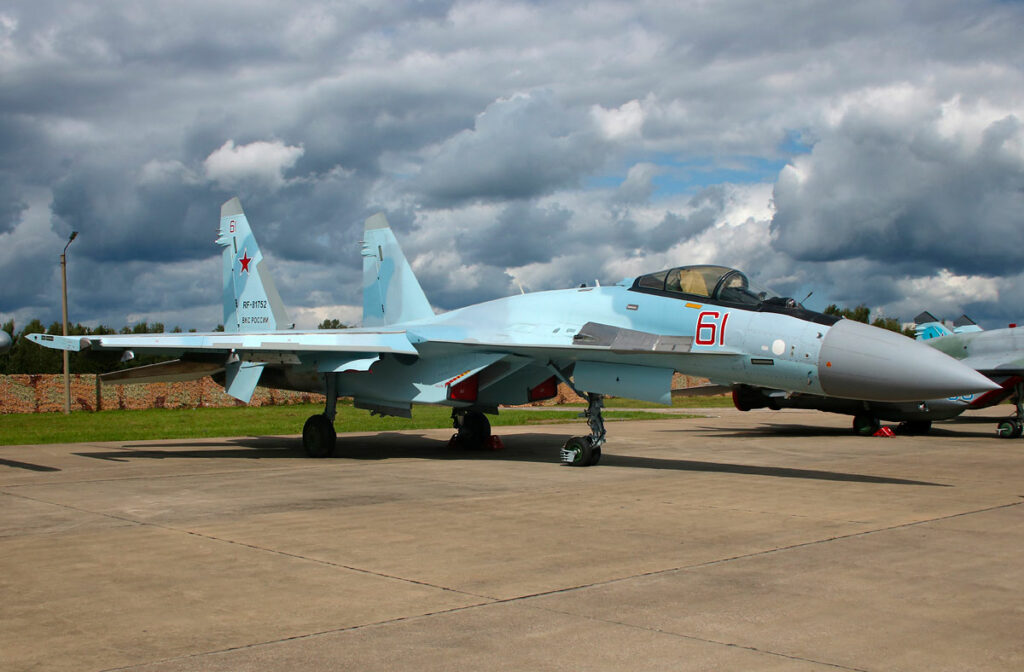
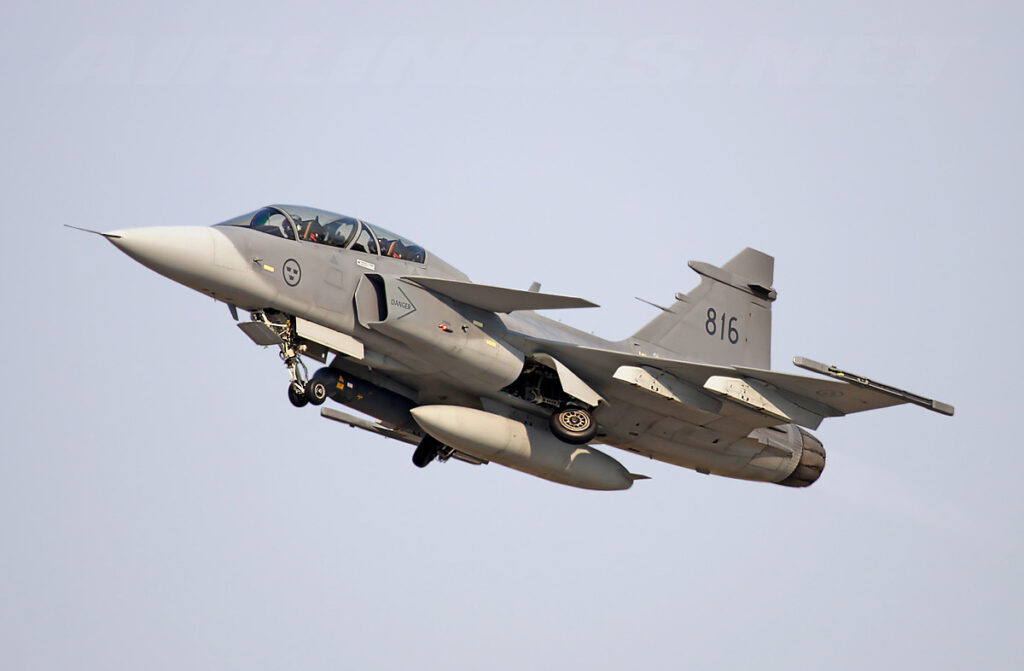
JAS 39 Gripen E/F (Sweden)
The Saab JAS 39 Gripen E/F is a light multirole fighter designed to offer high flexibility at a low operating cost. This modernized version of the original Gripen features an ES-05 Raven AESA radar, an advanced electronic warfare suite, and a General Electric F414-GE-39E engine, which allows it to reach Mach 2 (2,400 km/h). It is designed to take off from short runways (400 meters), operate from roads, and be quickly rearmed (10 minutes by a team of six people). Its operating cost, estimated at around $7,000 per flight hour, is among the lowest for a 4.5-generation fighter. The Gripen E can carry up to 5,300 kg of weapons: Meteor and IRIS-T air-to-air missiles, guided bombs, and reconnaissance pods. It is interoperable with NATO standards, facilitating its integration into coalitions. Brazil and Sweden are the first users of the E/F model. Its range, maneuverability, rapid maintenance, and open architecture make it a strategic tool for air forces with more limited resources but seeking to maintain modern combat capabilities.
F-15EX Eagle II (United States)
The Boeing F-15EX is the latest evolution of the famous F-15, designed to complement the F-35 in high-intensity missions. It retains the F-15’s robust airframe, but incorporates an AN/APG-82 AESA radar, a modern cockpit, an EPAWSS electronic warfare suite, and the ability to carry up to 13,600 kg of weapons. This includes AIM-120 and AIM-9X missiles, JDAM bombs, and potentially hypersonic or microwave weapons. It can reach Mach 2.5 (3,000 km/h) with a range of nearly 4,000 km. The F-15EX has 12 to 22 hardpoints, depending on the configuration, making it the fighter with the largest payload in the world. The US Air Force has ordered more than 100 units to replace its aging F-15Cs. It is also being offered for export, notably to Indonesia and India. Unlike the F-35, it is not stealthy, but its powerful radar, advanced connectivity, and firepower allow it to be used in the first waves of attack against heavily defended targets.
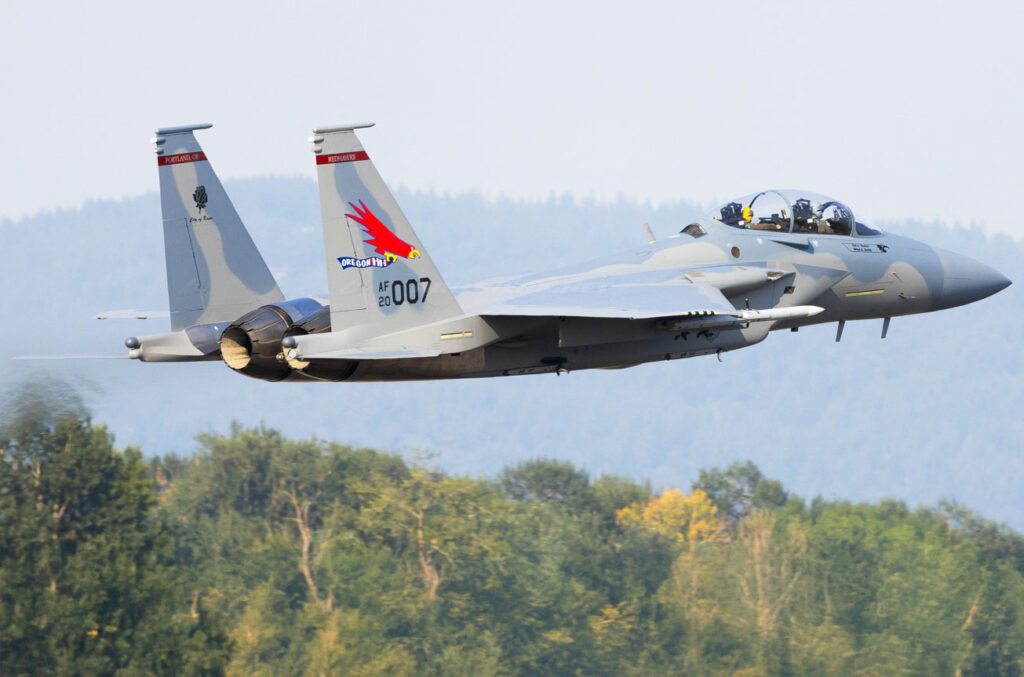
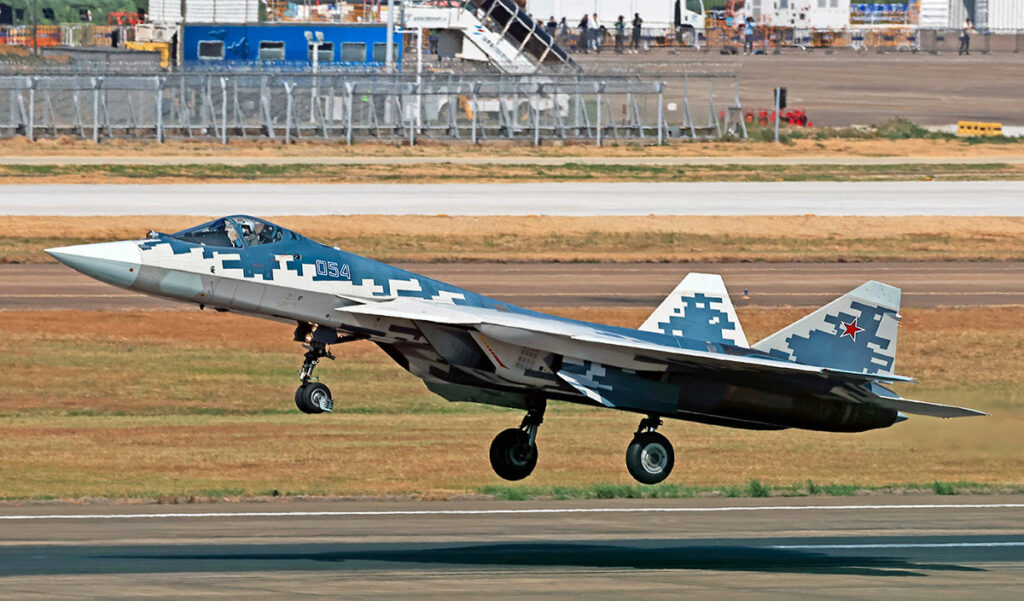
Su-57 Felon (Russia)
The Su-57 is Russia’s first fifth-generation stealth fighter. It combines stealth, supercruise, thrust vectoring, and advanced sensors. Its stealth design remains partial compared to the F-22 or F-35, but it benefits from highly advanced electronic countermeasures and an AESA N036 Byelka radar. It can fly at Mach 2 (approximately 2,470 km/h) and reach supercruise (supersonic flight without afterburner). Its weapons are carried in the fuselage to preserve its radar signature, but it can also use external hardpoints. It can theoretically carry R-77M, Kh-59MK2 or Kh-47M2 Kinzhal missiles. Its range exceeds 3,500 km. The final engines (Izdeliye 30) are still under development. Although Russia has symbolically deployed it in Syria, the Su-57 remains in the initial production phase with fewer than 30 units delivered to date. However, it embodies Russia’s efforts to catch up technologically with American and Chinese fighters. Its future development will depend on the industrialization of its components and engines.
Chengdu J-20 Mighty Dragon (China)
The Chengdu J-20 is China’s first operational fifth-generation stealth fighter. It is designed for long-range air superiority, with a cell optimized for frontal stealth, divergent air intakes, and a canard configuration. Initially powered by Russian AL-31F engines, it is gradually being fitted with WS-10C and then WS-15 engines. It can reach Mach 2.2 (2,700 km/h) and carry out air-to-air and air-to-ground missions, with a range of around 4,000 km. Its AESA radar and integrated sensor suite make it effective in contested environments. It carries its missiles in its fuselage (PL-15, PL-10) to maintain its low radar signature. The J-20 has been spotted on patrols along the border with India and in the Taiwan Strait. Production is ramping up, with an estimated fleet of over 200 aircraft. Although some of its features remain secret, it is seen as a direct response to the F-22 and F-35, with an emphasis on range and stealth, but its close-combat performance is still under discussion.

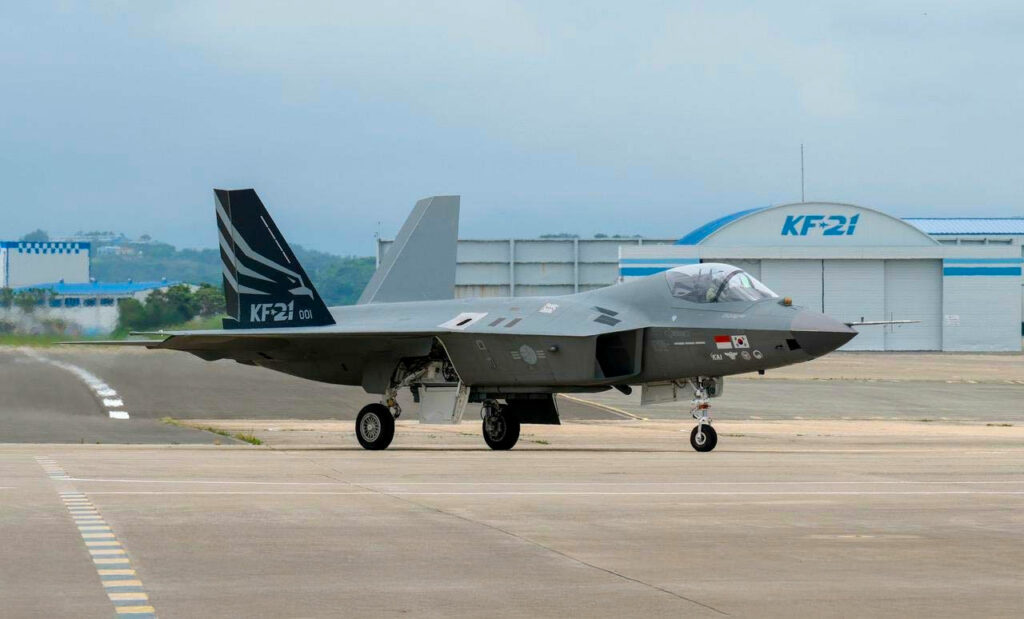
KF-21 Boramae (South Korea)
The KF-21 Boramae is a South Korean 4.5+ generation multirole fighter developed by KAI with partial funding from Indonesia. It is designed to replace the aging F-4 and F-5 aircraft. Its stealth configuration (low frontal radar signature), locally developed AESA radar, and digital cockpit make it a modern aircraft. It is powered by two GE F414 engines and can reach Mach 1.8 (approximately 2,200 km/h). Its payload capacity is estimated at 7,700 kg, with a range of 2,900 km. The KF-21 is designed for NATO interoperability, with an open architecture that allows for the integration of new weapons or sensors. Its first flight took place in July 2022, and flight testing will continue in 2025. It is scheduled to enter production in 2026. Although not yet operational, its technological and industrial potential is significant. It represents South Korea’s growing independence in advanced defense production and could become a serious alternative in the international market for multirole fighters.
F-22 Raptor (United States)
The Lockheed Martin F-22 Raptor is the world’s first operational fifth-generation fighter, used exclusively by the US Air Force. It is optimized for air superiority but has secondary air-to-ground capabilities. Thanks to its advanced stealth technology, Pratt & Whitney F119 thrust vectoring engines, and supercruise (supersonic flight without afterburner at Mach 1.82), it is virtually impossible to intercept. Its maximum speed exceeds Mach 2.25 (2,760 km/h). It is equipped with AN/APG-77 AESA radar and passive sensors that provide long-range detection without being detected. It carries its missiles (AIM-120, AIM-9) in its cargo bay to minimize its radar signature. Despite its performance, production was halted in 2012 after 195 units were built due to its high unit cost (around $150 million) and the priority given to the F-35. The F-22 remains unmatched in pure air combat. It is regularly deployed in the Pacific and the Middle East as a deterrent, although its network connectivity lags behind the F-35. Its unique combination of stealth, super-maneuverability, and kinetic performance still makes it one of the best multirole fighters in the world.
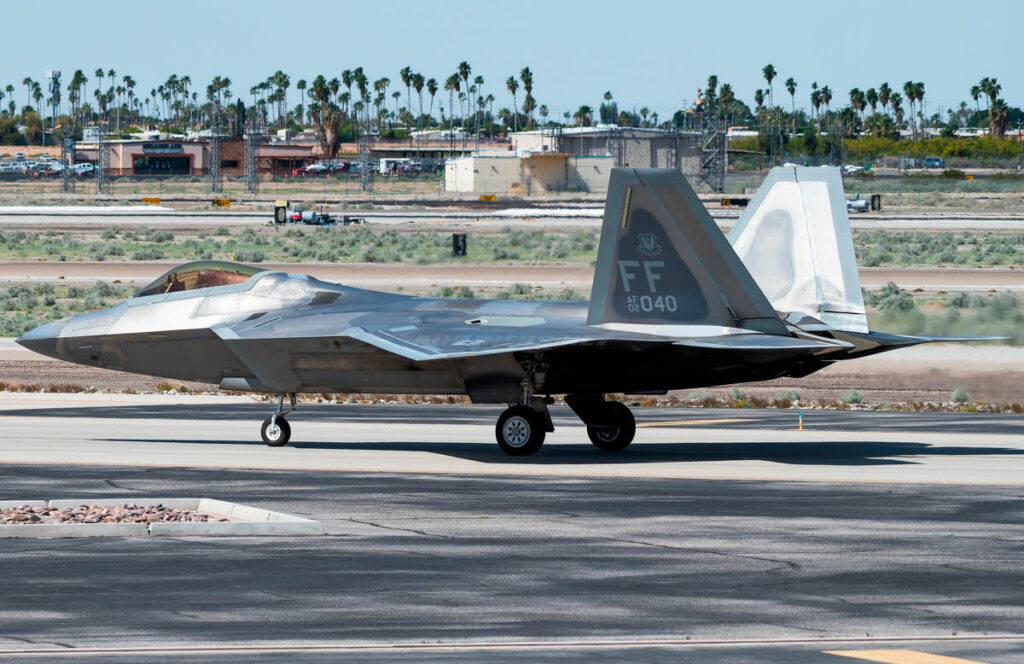
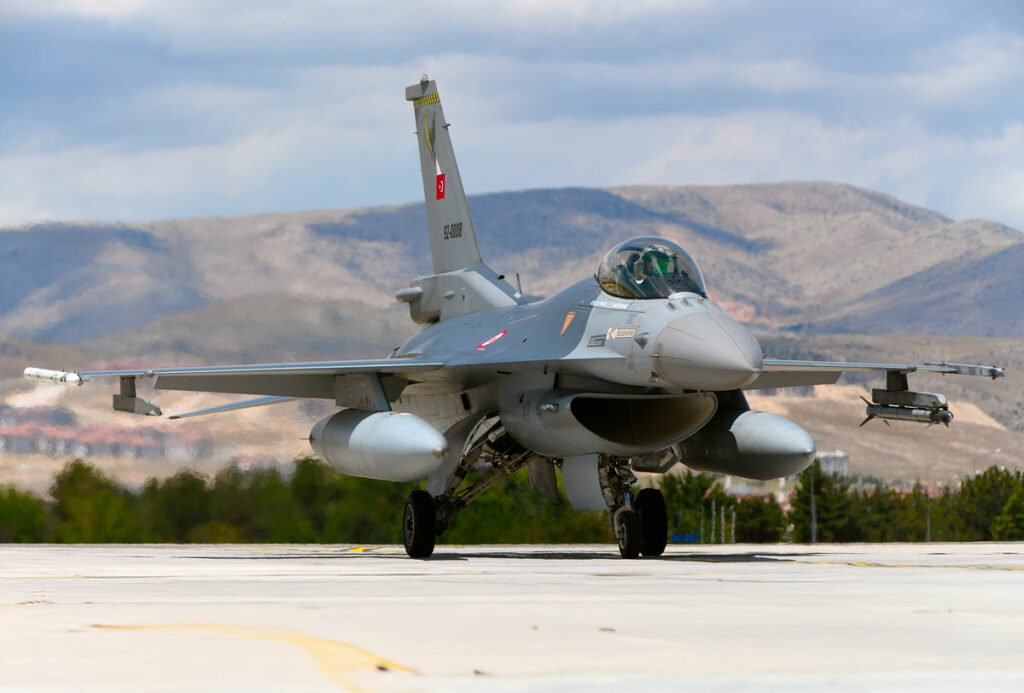
F-16 Fighting Falcon (United States)
The F-16 Fighting Falcon, designed by General Dynamics (now Lockheed Martin), is one of the most widely used multi-role fighters in the world, with more than 4,500 units produced. The most recent version, the F-16V (Block 70/72), features AN/APG-83 AESA radar, modernized avionics, a digital cockpit, and an advanced electronic warfare suite. Single-engine, it remains lightweight, fast (Mach 2, or approximately 2,400 km/h), and highly maneuverable. It can carry up to 7,700 kg of weapons, including AIM-120 missiles, JDAMs, HARMs, and laser-guided bombs. Maintenance is simplified, with one of the lowest operating costs for a front-line fighter (approximately $22,000 per flight hour). It is used by more than 25 countries, including Turkey, Israel, South Korea, the United Arab Emirates, and Greece. The F-16 has been deployed in most recent conflicts (Iraq, Kosovo, Afghanistan). It remains a benchmark platform for air forces seeking a balance between cost, performance, and reliability. Its ongoing modernization ensures its relevance until the end of the 2030s.
F-15E Strike Eagle (United States)
The McDonnell Douglas F-15E Strike Eagle is a two-seat multi-role variant of the F-15 designed for deep penetration and attack of heavily defended ground targets, while maintaining air combat capabilities. It is equipped with F100-PW-229 engines, AN/APG-70 radar (or APG-82 for upgraded versions), and comprehensive avionics for day/night and all-weather operations. It can reach Mach 2.5 (approximately 3,000 km/h) with a range of 3,800 km without refueling. It can carry more than 11,000 kg of weapons, including AIM-120 air-to-air missiles, JDAM bombs, LGBs, Maverick missiles, and SLAM-ER missiles. The Strike Eagle is used by the United States, Israel, Saudi Arabia, and Qatar. It has proven its worth in Iraq, Afghanistan, Syria, and other theaters of operation. Its effectiveness in close support, strategic bombing, and air defense makes it one of the most powerful multirole aircraft, capable of operating without escort thanks to its radar power and payload.
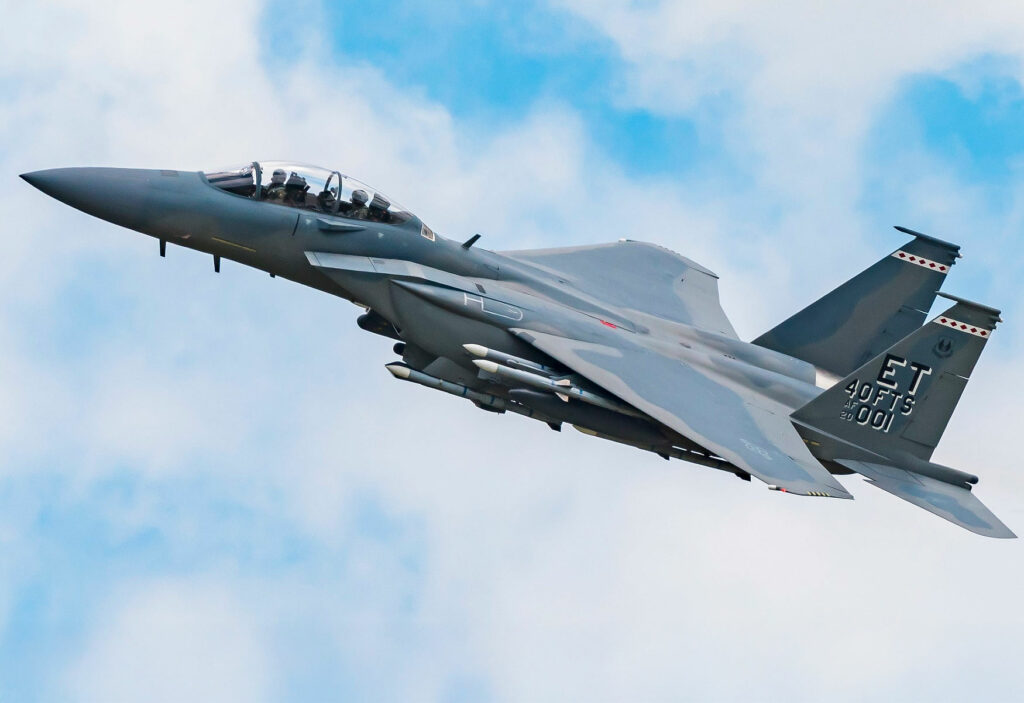

MiG-29 Fulcrum (Russia)
The MiG-29, developed in the 1980s, is a light multirole fighter designed to counter Western F-16 and F/A-18 aircraft. Its twin-engine airframe gives it high thrust, excellent agility, and a maximum speed of Mach 2.25 (approximately 2,760 km/h). It is equipped with N019 radar and a helmet-mounted sight for firing R-73 missiles in close combat. Modernized versions (MiG-29SMT, MiG-29M) improve range, avionics, and weaponry, with a capacity of over 4,000 kg of various weapons. It has been exported to more than 30 countries and is still in service in India, Algeria, Poland, and Ukraine. Although technologically outdated compared to 5th generation fighters, its modernization, maneuverability, and low cost make it a still operational aircraft in many air forces. Its role in recent conflicts, notably in Libya, Syria, and Ukraine, demonstrates its resilience and adaptability to a variety of missions.
Su-27 Flanker (Russia)
The Su-27, which entered service in the 1980s, is a heavy fighter designed to compete with the F-15. It is powered by two AL-31F engines and can reach Mach 2.35 (2,800 km/h) with a range of 3,530 km. Highly maneuverable thanks to its swept wings and rear control surfaces, it is suitable for both close-range and long-range air combat. It can carry up to 8,000 kg of weapons, including R-27, R-73, and R-77 missiles. Numerous variants have been developed (Su-30, Su-33, Su-35) based on this airframe. The Su-27 has been exported to China, Angola, Ethiopia, and Vietnam and has been engaged in several regional conflicts. Its robust design, good aerodynamic performance, and ease of modernization make it still relevant today in several armies. It often serves as the basis for advanced training aircraft, two-seat fighters, or naval variants. Although technologically outdated, its agility and power make it an excellent multi-role platform.
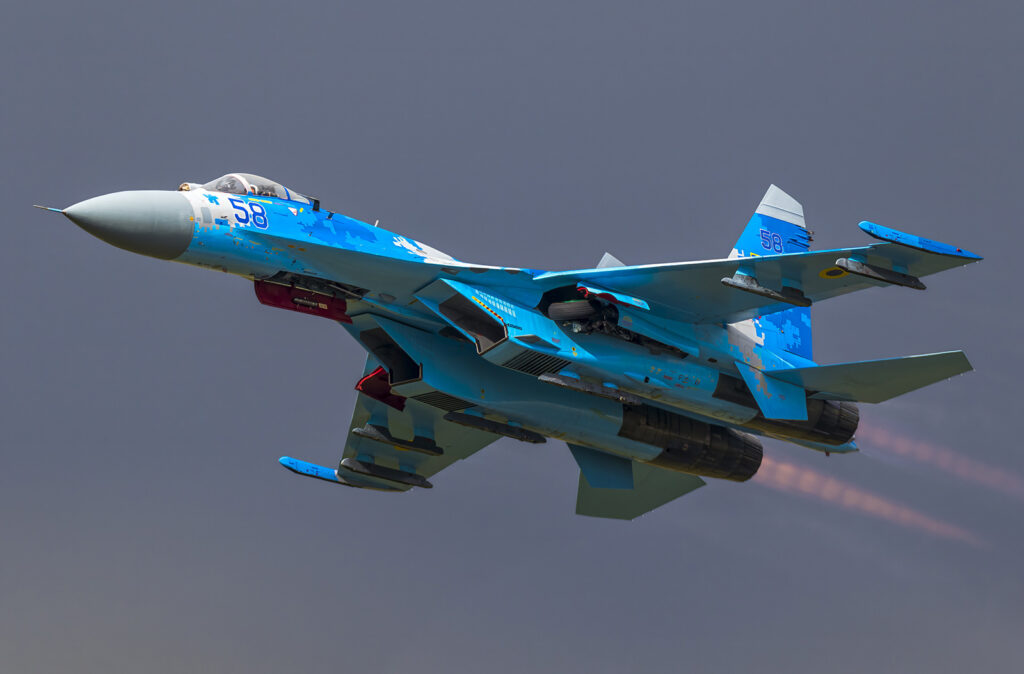
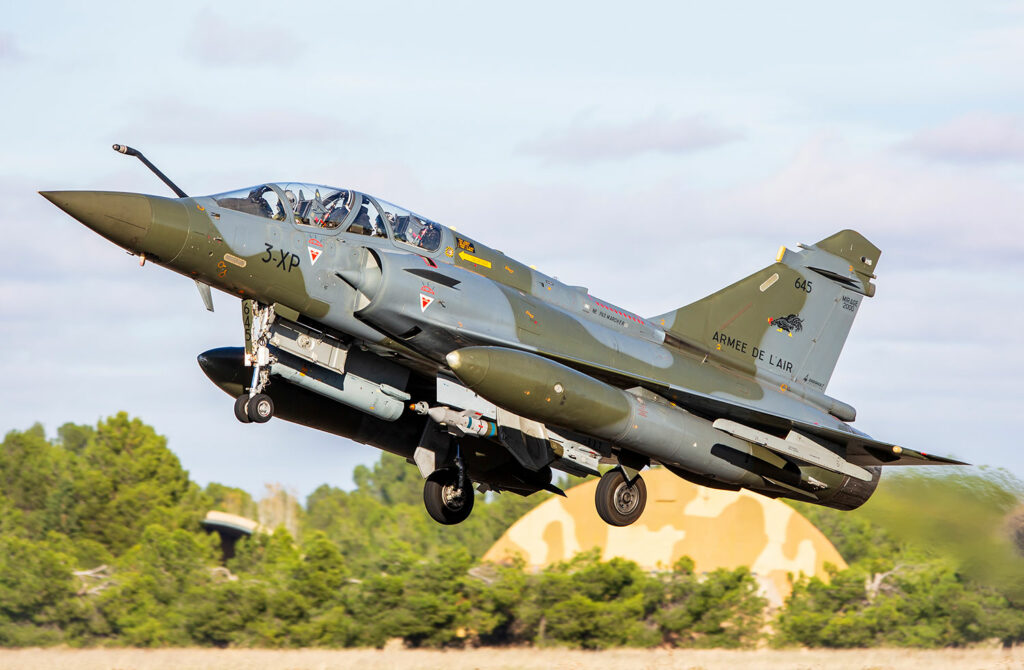
Dassault Mirage 2000 (France)
The Mirage 2000, designed by Dassault Aviation in the 1980s, is a light single-engine fighter aircraft developed as part of the French Air Force’s modernization program. It can reach Mach 2.2 (2,700 km/h) and is equipped with RDM or RDY radar, depending on the version. Its delta wing airframe ensures excellent stability and good high-altitude performance. It has been produced in several versions: Mirage 2000C (interceptor), 2000D (ground attack), and 2000-5 (modernized multirole). It can carry 6,300 kg of weapons, including MICA missiles, guided bombs, and reconnaissance pods. The Mirage 2000 has been exported to nine countries, including India, Qatar, Brazil, and the United Arab Emirates. It has seen operational service in Afghanistan, Libya, and the Sahel. Although it is being replaced by the Rafale in the French military, it remains in active service with several other armed forces. Its reliability, ease of maintenance, and balanced performance justify its place in this selection of the best multi-role fighters still in operation.
War Wings Daily is an independant magazine.